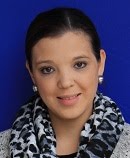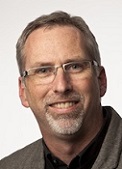I was honored (ok…and also proud) recently to attend the South Carolina award ceremony for the recipients of NCWIT Aspirations award. The National Council for Women in Technology recognizes girls for their interest and achievements in the technology and Computer Science classroom. They are right there on the front lines addressing the lack of gender diversity in both education and industry!
Hundreds of high school girls around the county were honored in similar events. In fact, over 8000 students have received awards over the years. For many, this will be a giant stepping stone and the encouragement needed to explore a technological field as a major in college and beyond.
Over the decades as technology has gone from the fringes of elite scientific society to something which is as common as food and shelter for most people. It has become a backbone upon which almost every industry builds it’s tools and connects with the world. Traditionally, the percentage of females involved in the design, implementation, testing, marketing, advertising, sales, and support of the various technologies has been incredibly small. Of course there have been some tremendous contribution from women, but those numbers are still far too small relatively speaking. When females have been involved, there has usually not been much credit or recognition given.
So what that translates to is that many of the products we use now have been created without significant input representing half the population of the planet. Those products naturally will have a certain unavoidable bias to them. That is so crucially important to recognize because women are different! (wait, what?!) And that is a wonderful thing! They ask different questions, interpret problems differently, understand information differently, have different perspectives and priorities, have different passions, want different things, interact with technology differently, and work with people differently. We can take advantage of that!
Who doesn’t love the amazing technology we have at our fingertips? What a typical person can do on their smart phone is more than the entire NASA computing systems used to send rockets to the moon. Walking into an electronics store today we find products available that address almost every aspect of our society. Technology is allowing us to interpret, see, and interact with the world around us in ways never even imaginable. We can find, address, and even solve problems that help us truly make the world a better place.
We are already seeing increased females taking Computer Science and technology classes in middle school, high school and in college. While we still have a huge mountain to climb, we are starting to see more women enter the tech-industry as well. This translates to more women being prominent and active contributors to the products we use every day. We will start to see more recognized female technology leaders. Not far off from now, I think the world is going to experience a new wave of innovation, creativity, and incredible technologies like we have never seen. We will identify and start to solve problems that we didn’t even know existed.
Another technology revolution.
So…to Alexa, Rebecca, Haley, Beau, Lauren, Caroline, Kelsey, Eleanor, Sammie, Amanda, Tanner, Meg, Katherine, Elen, Riley and the many thousands of girls across the United States brave enough to enter into this world, I look forward to seeing and using the products you help to create.
Doug Bergman, 9-12 Representative

Doug Bergman – Gr. 9 to 12 teacher representative







